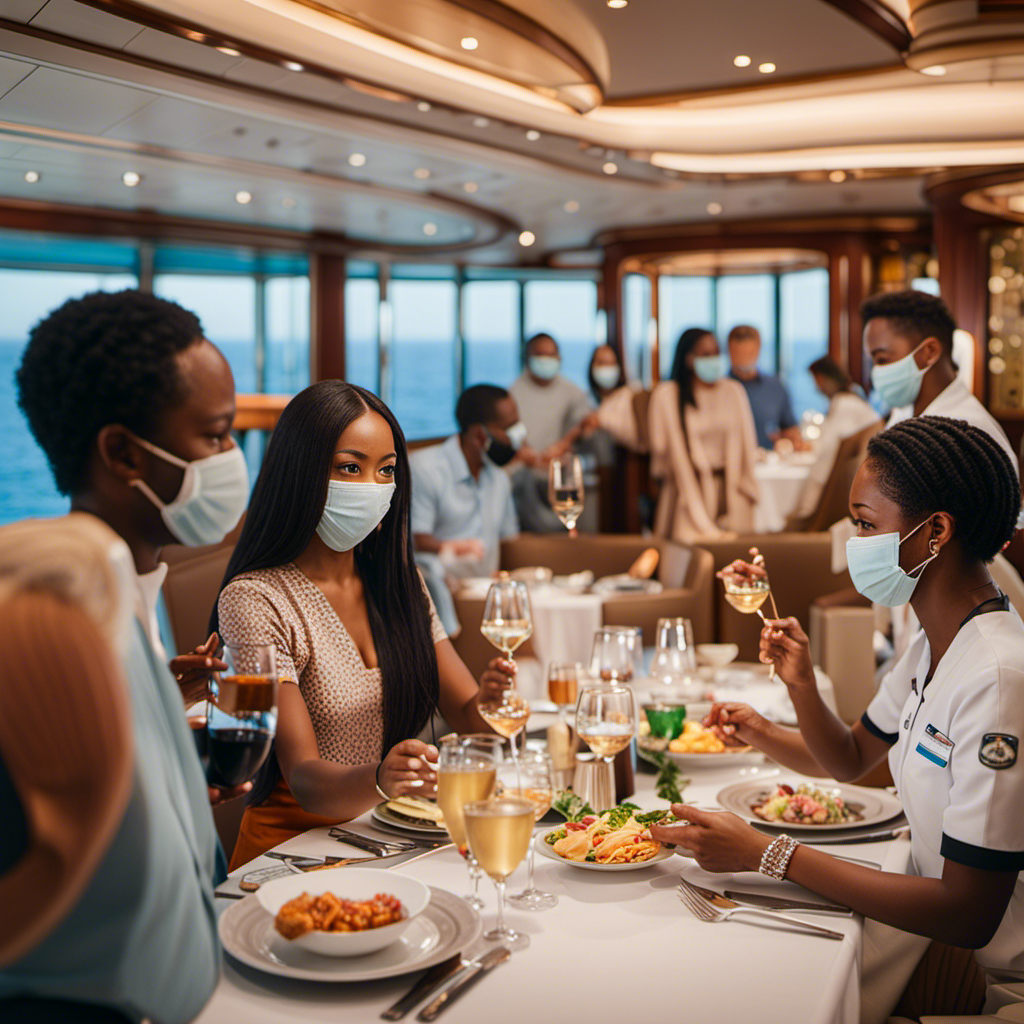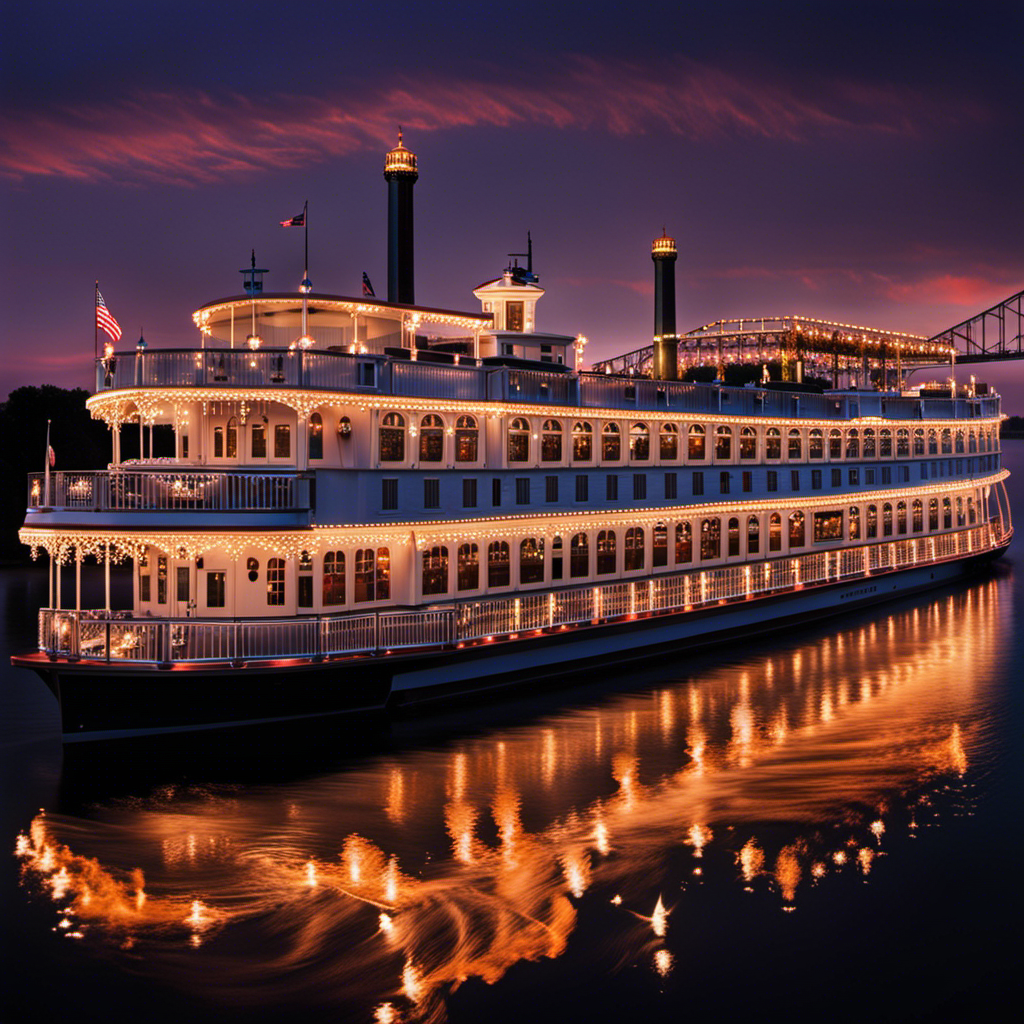I’m excited to share that the Centers for Disease Control and Prevention (CDC) has released new regulations permitting cruise lines to resume their activities.
Did you know that these guidelines include the requirement for simulated voyages to practice new protocols? These test cruises are mandatory for each ship, but cruise lines can skip them if crew and passengers are fully vaccinated.
To make these simulations possible, volunteers are needed for these cruises.
In this article, I will provide you with all the information you need to know about volunteering for a safe cruise journey according to the CDC guidelines.
Key Takeaways
- CDC has replaced the No Sail Order with a Framework for Conditional Sailing, allowing cruise lines to participate in simulated voyages to practice new protocols.
- Volunteers must be at least 18 years old and without pre-existing conditions that put them at risk.
- Simulated voyages typically last between 2-7 days, with a minimum recommendation of three days and two nights.
- Passengers will be reminded of the risks of cruising during the pandemic, including the high reproduction rate of the virus on previous cruise ships.
Eligibility Requirements for Volunteer Cruises
To be eligible for volunteer cruises, I must be at least 18 years old and not have any pre-existing conditions that put me at risk.
The selection process for volunteers is stringent to ensure the safety and well-being of all participants. The cruise lines prioritize individuals who are in good health and have no underlying medical conditions that could potentially worsen during the voyage.
This requirement is crucial to minimize the risk of any health emergencies or complications while on board. By excluding individuals with pre-existing conditions, the cruise lines can maintain a controlled environment and provide a safer experience for everyone involved.
Therefore, it is essential for potential volunteers to understand and meet these eligibility criteria to be considered for participation in volunteer cruises.
Duration and Capacity of Volunteer Cruises
During simulated voyages, volunteer cruises typically last between 2-7 days with limited capacity, usually 10% of the maximum number of passengers. This duration allows for a comprehensive testing of various components of a normal cruise experience.
Here are four key points to consider about volunteer cruise duration and capacity:
-
Simulated voyages aim to replicate real cruise conditions, so the duration of 2-7 days ensures a thorough evaluation of protocols and procedures.
-
The limited capacity of volunteer cruises, typically 10% of the maximum number of passengers, allows for better control and monitoring of health and safety measures.
-
The actual number of passengers allowed onboard may vary based on port agreements, which can impact the capacity of the volunteer cruises.
-
The minimum number of passengers required for a simulated voyage is determined by the specific port agreement, ensuring a sufficient sample size for testing purposes.
It’s important to note that these guidelines are in place to ensure the safety and effectiveness of the simulated voyages, ultimately leading to a safer return to cruising for everyone involved.
Warnings and Risks of Cruise Travel During the Pandemic
I must acknowledge the inherent risks and potential dangers associated with embarking on a cruise adventure amidst the ongoing pandemic. The CDC highlights the high reproduction rate of the virus on previous cruise ships, making sailing during a pandemic an inherently risky activity.
Passengers should exercise cautiousness and awareness when considering a cruise. It is crucial to be informed about the unproven and untested health and safety protocols that cruise lines must notify passengers of in writing. Additionally, it is important to note that face masks are required for passengers and crew, along with social distancing measures. These precautions are in place to ensure the safety and well-being of everyone onboard.
Activities and Testing on Volunteer Cruises
Embarkation and debarkation procedures, dining policies, and entertainment venue protocols are all tested during the simulated voyages. These test cruises serve as a crucial opportunity for cruise lines to practice and refine their new protocols before welcoming back passengers.
One of the exciting aspects of these test cruises is the inclusion of modified private island excursions. These excursions provide a unique experience for volunteers to explore and enjoy the beauty of private islands while adhering to the new safety guidelines.
Additionally, evacuation procedures are thoroughly tested during the voyages to ensure the safety and well-being of all passengers and crew members.
It’s important to note that these simulated voyages are essential in preparing for the safe return of cruise travel.
Health and Safety Policies for Volunteer Cruises
Passengers and crew must adhere to health and safety policies while participating in the volunteer cruises. These policies include testing requirements, hand hygiene standards, face mask usage, and social distancing measures.
COVID testing is a crucial component of these policies. Before boarding the ship, all passengers are required to undergo testing on embarkation day. Additionally, testing is also mandatory on debarkation day for those who are unvaccinated. These testing requirements are part of the new framework for the return to sailing and ensure the safety of everyone on board.
Face masks are another essential aspect of the health and safety policies. Passengers and crew are required to wear face masks throughout the voyage, in line with similar policies on land. These measures aim to minimize the risk of COVID-19 transmission and create a safe environment for all on the volunteer cruises.
Frequently Asked Questions
Can Volunteers Receive Any Form of Compensation or Employment for Participating in the Simulated Voyages?
No, volunteers cannot receive any form of compensation or employment for participating in the simulated voyages. Additionally, there are age restrictions for volunteers, as they must be at least 18 years old.
Is There a Maximum Age Limit for Volunteers Who Want to Participate in the Simulated Voyages?
There is no maximum age limit for volunteers in the simulated voyages. However, compensation is not allowed for volunteers. It’s important to note that these guidelines prioritize safety and adherence to CDC protocols.
Are There Any Specific Medical Conditions That Would Disqualify Someone From Being Eligible to Volunteer for the Simulated Voyages?
Yes, certain medical conditions may disqualify someone from being eligible to volunteer for the simulated voyages. The CDC guidelines state that volunteers must not have pre-existing conditions that put them at risk.
Will Volunteers Be Provided With Personal Protective Equipment (Ppe) Such as Face Masks and Hand Sanitizers During the Voyage?
Yes, volunteers are provided with personal protective equipment (PPE) such as face masks and hand sanitizers during the voyage. However, it is important to note that compensation for volunteers is not allowed according to CDC guidelines.
How Are the Limited Capacities for the Simulated Voyages Determined and Who Decides the Final Number of Passengers Allowed Onboard?
The limited capacities for simulated voyages are determined by port agreements. The final number of passengers allowed onboard is decided through a collaborative decision-making process between the cruise lines and the port authorities.
Alfons is the visionary leader and driving force behind Voyager Info’s success. As the Editor in Chief, he brings a wealth of experience and an unwavering passion for travel to the helm of our cruise-centric platform.
With a lifelong fascination for exploring new horizons, Alfons discovered his love for the ocean and cruising at a young age. From sailing across pristine Caribbean waters to embarking on daring expeditions to far-flung destinations, he has amassed a treasure trove of first-hand experiences in the world of cruising.









